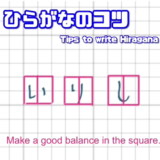Complicated part of Kanji
When you learn Kanji, it may be difficult for you to learn Kunyomi and Onyomi. I know how you feel… Why each Kanji has different readings! In this article, I will tell you about the difference between Kun-yomi and On-yomi.
When you write a sentence by using Kanji, the following tips will be useful.
Kun-yomi(訓読み) and On-Yomi(音読み)
Here are the differences between Kunyomi and Onyomi.
Kun-yomi (訓読み) — When you read Kanji with Kun yomi, you can understand the meaning of that Kanji.
On-yomi (音読み)— When you read Kanji with on yomi, you can’t understand the meaning of that Kanji.
The reading of Onyomi is like sound. That’s why this Kanji “音(sound)” is used.
Let’s see an example with this Kanji.
e.g.) 雷 —> Kun yomi: Kaminari
—> On-yomi: Rai
On-yomi is often used with several Kanjis
When several Kanjis are combined, those Kanjis are often read by Onyomi.
Let’s see some examples.
雷が鳴っていた間、私は家で家事をしていました。
(While the thunder lasted, I did housework at home.)
In this sentence, the same Kanji is used for “家” and “家事”. However, it is read in a different way.
When two Kanjis are combined as “家事”, we read them with On-yomi.
家(Ie/Kun-yomi)
家事(Ka ji /On-yomi)
Let’s see similar examples for 雷. The following examples are read by On-yomi.
雷鳴 (Raimei) – a sound of thunder
落雷 (Rakurai) – lightning strike
雷神 (Raijin) – god of lightning
雷鳥 (Raicho) – ptarmigan
Not only 雷, but also the combined Kanjis(鳴, 落, 神, 鳥) are read by On-yomi.
Here are examples, when reading these Kanjis by Kun-Yomi
鳴く (Naku) – Sing/Bark
落ちる (Ochiru) – Fall
神 (Kami) – God
鳥 (Tori) – Bird
I would like you to learn a grammatical explanation about Onyomi and Kunyomi with your text book.
However, I wanted to share the basic idea of Kun-yomi and Onyomi and some examples in this post.
Please remember these basics when you learn Kanjis.





ありがとうございます!
こちらこそ、ありがとうございます!